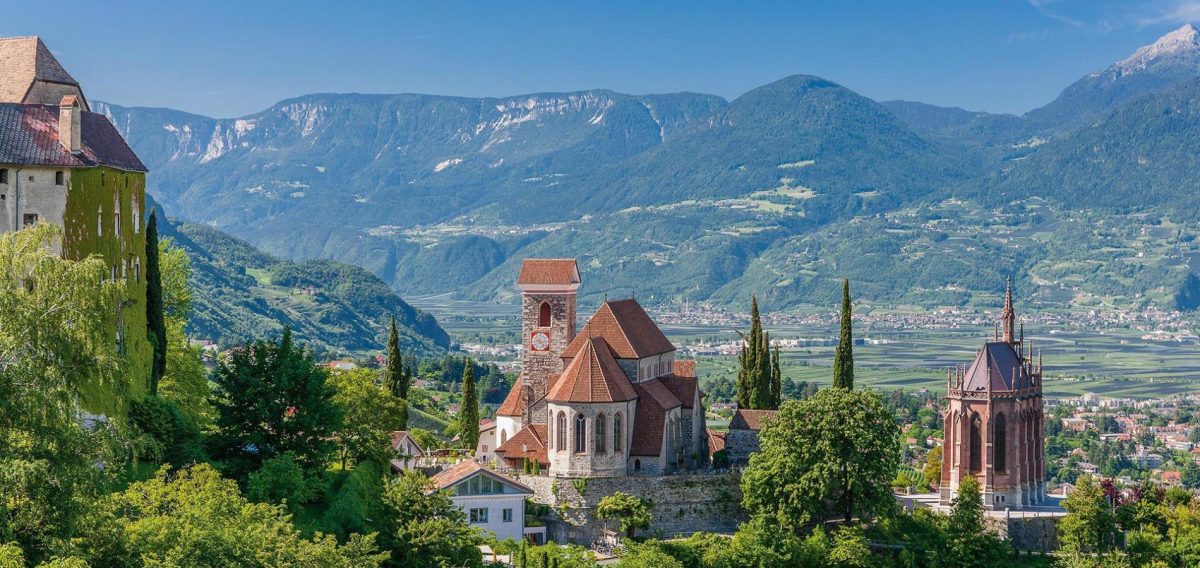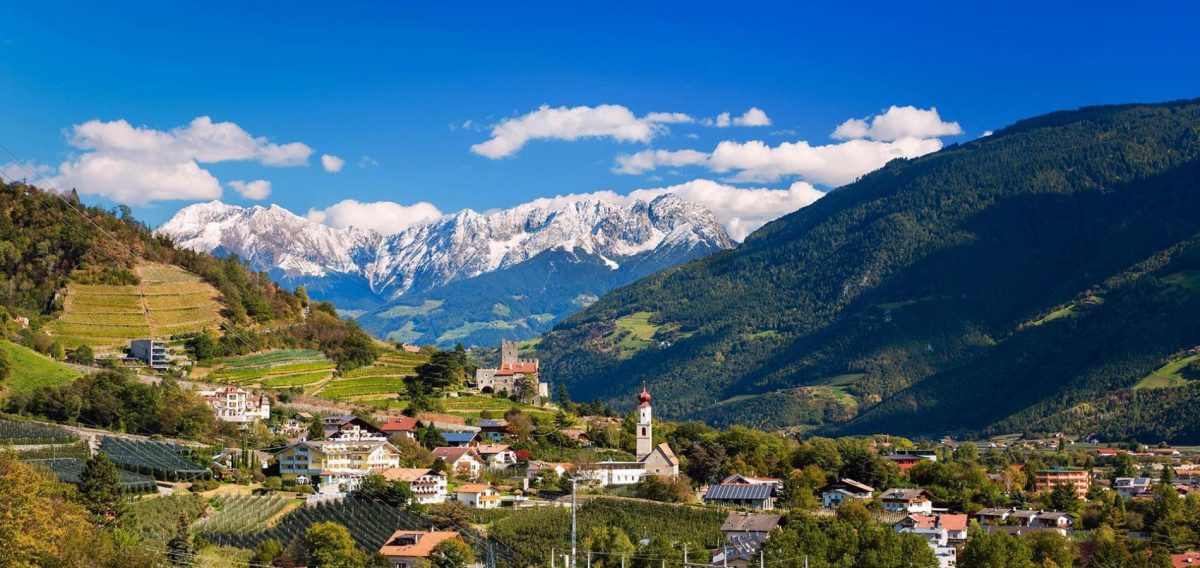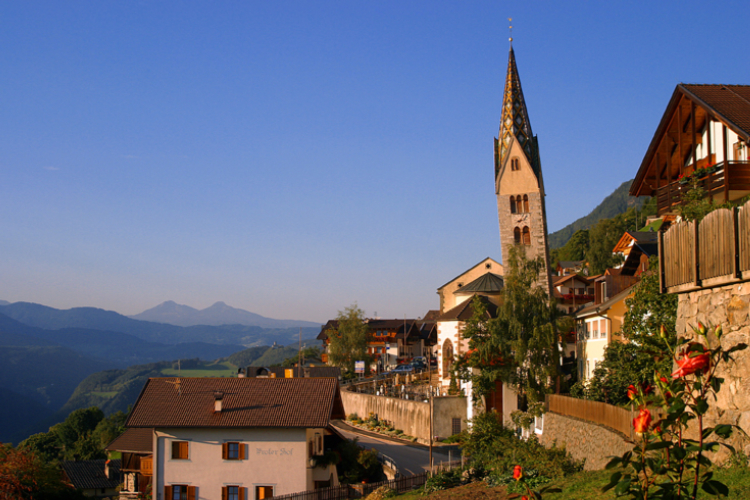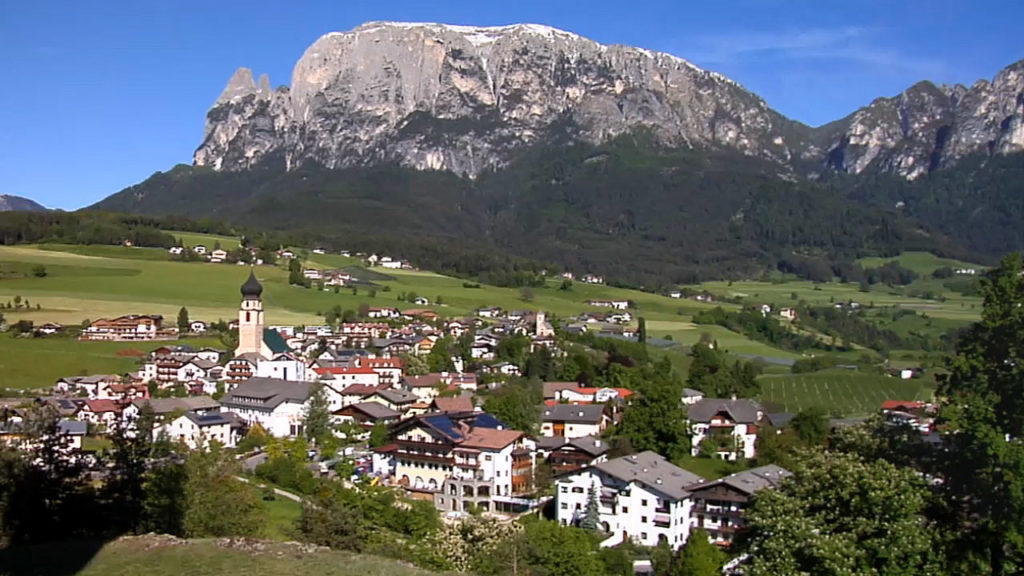How to reach Scena
Attractions:
– Mausoleum
– Castle Schenna
– Gardens of Trauttmansdorff Castle | Merano
Scena/Schenna is set in a prime location on the slopes above the spa town of Merano/Meran. It consists of seven villages at different altitudes and is characterised by a special blend of South Tyrolean charm and Mediterranean lifestyle. Scena’s privileged position brings together an undeveloped rural environment with the convenience of proximity to an urban center and its rich cultural life. Thanks to the mild climate, hiking and mountain biking is possible from spring until late autumn. Families will find ideal hiking trails leading up to mountain pastures with spectacular panoramic views and numerous mountain inns. With its modern conveniences and rural charm, Scena is an ideal destination for a family vacation, offering high-standard facilities and cozy accommodation facilities.
Encircled by magnificent mountains, Scena is traversed by numerous hiking trails leading to and from the Ifinger and Hirzer peaks extending as far as the Merano 2000 recreational area. The vegetation at different altitudes around Scena varies just as much. While in the village at 600 meters you can find palm trees and cypresses, conditions at 1,536 meters near the outlying hamlet of Videgg are decidedly Alpine. The two most distinctive landmarks in Scena are the Schenna Castle and the Mausoleum of Archduke Johann. Like Empress Sissi, this is also where the Archduke once used to spend his summer months.
From easy walks along the old irrigation channels and hikes up to mountain huts, through the forests and meadows or high-altitude trails in the Sarntal Alps, Scena is a perfect departure point for a wide range of outdoor activities. Thanks to five cableways and two chairlifts, the hiking areas above Scena are also accessible on foot as well. There are numerous restaurants, mountain huts, and shelters welcoming hikers at various altitudes, with authentic South Tyrolean hospitality, traditional hearty Tyrolean meals, and sophisticated local culinary delights.
Scena’s privileged position brings together an undeveloped rural environment with the convenience of proximity to an urban center and its rich cultural life. In Scena itself, rural traditions continue to predominate, with agriculture and farming remaining the mainstay of the local economy. In the fruit orchards, there are around 800,000 trees covering 300 hectares of land, all following the strict standards of integrated production yielding first-grade produce. Nearly 70 farmers are involved in animal husbandry, with about 1,500 heads of cattle and other livestock. The contribution of the mountain farmers is crucial – in addition to high quality crops and produce they also look after and maintain the land that is shared by visitors and locals for recreational purposes.
Nature and Culture:
Scena/Schenna on the sunny plateau above Merano/Meran with view towards South has unique hiking opportunities through some of the most beautiful cultural landscapes of South Tyrol. This alpine region lives from growing fruit and wine. Lately, livestock farming is increasingly returning, thus during the summer, you see young animals on the meadows such as the Tallner Alm mountain pasture. The tourist attractions are widely spread here, from the Mausoleum in the village of Scena to the many castles and palaces in the surrounding area.
Hiking
Enjoying nature in Scena means above all, hiking in the mild climate, from spring to late autumn and at all altitudes – from the forest road via the walk across pastures to the high-alpine mountain tour. Leisurely Waalwege trails in the low mountain range lead past grapevines and chestnut groves. The Wiesenweg trails leads past all cultural sites and provides magnificent views to the surrounding mountain world, while the Höfeweg farm road connects historical farms above Scena. In the mountains, well-marked hiking trails are passing from mountain pasture to mountain pasture and up to the impressive high mountains.
The spa town of Merano/Meran with its coffee shops, boutiques and the urban wellness area of Terme Merano thermal baths are reached equally as quickly as the cycle and hiking trails all around Scena. The charming town of Merano is easily reachable on foot via the Mitterplattweg and Maiser Waalweg panoramic promenades. Also during winter, when the Merano Christmas Market calls.
Food and wine:
In the restaurants of Scena/Schenna and its surroundings you can discover the wide culinary range of South Tyrol, from hearty South Tyrolean traditional cuisine and Italian classics served in mountain inns to fine dining and refined Michelin-star offerings in restaurants.
In addition, many of the Alpine huts in the area offer Real Quality in the Mountains and local products. Most of the inns also boast an appealing wine list, ranging from homemade wine to the finest wines from around the region of South Tyrol.
The South Tyrolean Cuisine of Today
Traditional South Tyrolean home cooking has become noticeably refined in recent decades, without losing its down-to-earth character. Add to that the Italian classics, along with light and sophisticated appetizers. This is how modern South Tyrolean cuisine came into being, with dumplings, pasta, polenta and gnocchi playing a large role. Schlutzkrapfen and spaghetti, Schöpsernes and Carpaccio, Apfelstrudel and Panna Cotta all belong to the country cooking tradition.
The creativity of South Tyrolean cuisine is no longer just an insider’s tip. Friends of good food know about the culinary variety that awaits them in the holiday region South Tyrol. Enjoy in its most beautiful form: good food invigorates the senses. Relax and let the evening of an unforgettable day end in comfort and good taste.









